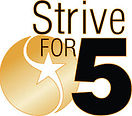top of page

Chapter 25
The Origin and Diversification of Eukaryotes
Learning Objectives:
1.B.2: Phylogenetic trees and cladograms are graphical representations (models) of evolutionary history that can be tested.
1.C.3: Populations of organisms continue to evolve.
2.A.1: All living systems require constant input of free energy.
2.A.2: Organisms capture and store free energy for use in biological processes.
2.B.3: Eukaryotic cells maintain internal membranes that partition the cell into specialized regions.
2.C.2: Organisms respond to changes in their external environments.
4.A.2: The structure and function of subcellular components, and their interactions, provide essential cellular processes.
4.A.6: Interactions among living systems and with their environment result in the movement of matter and energy.

Scientific Skills Exercise:
Interpreting comparisons of genetic sequences
Which prokaryotes are most closely related
to mitochondria?
Textbook page 501.
Bozeman Science: Endosymbiosis
Watch video.
Take notes on 2B.

Test Your Understanding
Textbook page 519, #1-5
Complete in Notes.
As you complete test, mark questions with:
a star (I know this),
a checkmark (I might know this),
or a question mark (I don't know, I guessed).
Self-correct.
Write validations/corrections for checkmarks, question marks, and missed stars (oops).

Chapter 1 Lab: Microscopy
The microscopy lab is a discovery lab. We will review the parts of the microscope to establish common language. We will walk through a set procedure and observe various items through the lens of the microscope. We will learn how to make field slides and wet mounts.

bottom of page


